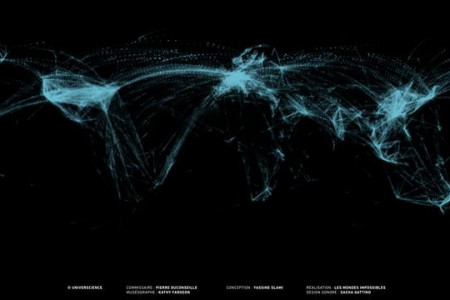
Transcribed
Cumulative world coal gross revenues by conponent and scenario, 2012-2035
Figure 3.14 Cumulative world coal gross revenues by component and scenario, 2012-2035 Depreciation Mining costs New Policies Scenario Transport and other Net revenues 450 Scenario 2 6. 10 12 14 Trillion dollars (2011)
Cumulative world coal gross revenues by conponent and scenario, 2012-2035
shared by W.E.R.I on Jul 12
205
views
0
faves
0
comments
---Coal supply: revenue ---
Revenues generated by the global coal industry are a function of the volumes sold to the
market and the prices received for the product. Coal prices vary not only by type ...
(steam,
coking and brown coal) but also by region, reflectng coal quality, transport costs and
infrastructure constraints. Typically, prices for coking coal are markedly higher than those
for steam coal, due to the relative scarcity of coking coal and the lack of substitutes in
steelmaking, justifying higher mining costs. Brown coal is rarely traded internationally and
consequently does not have an international market price. Instead, brown coal is usually
combusted in power stations close to the mine, with the cost of mining determining the
price. In 2010, global coal production stood at around 5 125 million tonnes of coal equivalent
(Mtce), generating for the coal industry gross revenues of around $430 billion (in year-2011
dollars). In the 450 Scenario, which assumes intensified climate policy measures, global
coal demand falls by 1.6% per year on average through to 2035 (compared to an average
increase of 0.8% per year the New Policies Scenario), with the change in demand leading
to a pronounced price drop.
Cumulative gross revenues from coal sales are projected to amount to $8.9 trillion in the
450 Scenario and $13.1 trillion in the New Policies Scenario (Figure 3.14). Coal supply is
characterised by its relatively high share of variable mining costs, such as labour, energy,
mining materials and spare parts (around 60% of total costs). In the 450 Scenario, the
variable mining cost component amounts to $4.6 trillion over the projection period,
compared with $6.9 trillion in the New Policies Scenario. Coal is also often hauled long
distances using trucks, railways, river barges and ocean-going vessels. Cumulative
transport costs stand at $2.3 trillion in the 450 Scenario, compared with $3.2 trillion in the
New Policies Scenario. Coal mining is far less capital intensive than oil and gas production,
and therefore depreciation is a relatively minor cost component, amounting to around
$0.86 trillion in the 450 Scenario and $1.1 trillion in the New Policies Scenario.
Net revenues differ substantially between coal varieties, around two-thirds of the total
coming from steam and brown coal (around 85% of global production), with coking coal
contribuTIng the remainder. This means around 15% of global coal production earns around
a third of the industry's total net revenues. Cumulative net revenues are $0.87 trillion
lower in the 450 Scenario compared with the New Policies Scenario. Nearly 55% of this
difference can be attributed to a change in price, whereas slightly more than 45% results
from volume change. While the price effect is almost entirely borne by coking coal, the
demand effect affects mainly steam coal. The level of coking coal producton, a key input
in the steel industry, declines by a relatively small amount across the scenarios due to
the lack of a large-scale substitute for it in this sector. In contrast, there are substitutes
for coal in power generation and industry, which see greater take-up of nuclear power
and renewables in the 450 Scenario. Although coking coal demand differs by a relatively
small amount between the scenarios, prices for coking coal drop sharply for two main
reasons: first, coking coal prices are much more sensitive to demand changes than steam
coal prices second, low demand for steam coal allows high quality steam coal to be used
for metallurgical purposes, which further depresses the price for coking coal.
-----Implications for Coal assets -----
Due to the relatively low capital costs involved in coal mining, coal prices need be only
slightly above variable costs in order to provide an adequate return on investment. Hence,
the risk of incurring large-scale losses on sunk investments is low. Moreover, exploration
costs, a classic stranded investment risk, are relatively minor in the coal industry. Reduced
demand and lower prices in the 450 Scenario do lead to the closure of the highest-cost
mines, for which decreasing market prices do not cover the variable costs of production.
These are usually old mines whose competiveness suffers from deteriorating geological
conditions, depletion of the lowest-cost resources and low productivity due to the scale of
the operation and inefficient equipment. Such mines typically have already recovered their
investment expenditure. Although the danger of stranded assets is, accordingly, limited
for the industry as a whole, individual players can still incur substantial losses on sunk
investment. This is particularly true for recent investments in fields which also require the
large-scale development of railway and handling infrastructure. In the 450 Scenario, coal
operators will generally be able to cover their variable costs, but sub-optimal utilisation
and depressed prices might result in losses on the underlying investment, highlighting the
benefits of early action to identify and mitigate such risks (Spotlight).
Source
Unknown. Add a sourceCategory
EnvironmentGet a Quote







